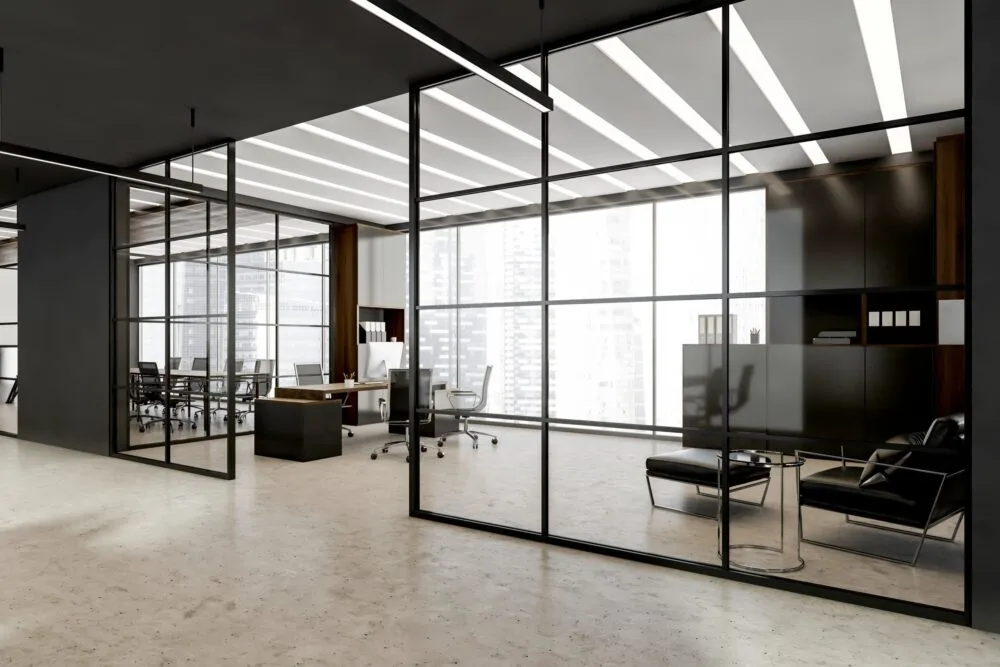Introduction
Are you considering a fresh new look for your office or commercial space? Glass partition walls are an increasingly popular choice, combining style with functionality. They offer modern aesthetics while allowing natural light to flow throughout the area. But before diving into this transformative project, understanding the glass partition wall cost is essential. This guide will walk you through everything you need to know—from factors influencing price to types available and installation expenses. Get ready to explore how glass partitions can elevate your space without breaking the bank!
Factors That Affect the Cost of Glass Partition Walls
Several factors influence the cost of glass partition walls. One key element is the type of glass used. Tempered or laminated glass tends to be pricier, yet offers enhanced durability and safety.
The thickness of the glass also plays a role. Thicker panels can provide better sound insulation and sturdiness but come at a higher price point.
Design complexity impacts costs as well. Custom shapes, patterns, or integrated features like sliding doors may increase expenses due to specialized manufacturing requirements.
Location affects pricing too. Installation costs can vary based on regional labor rates and availability of materials.
The overall size of your project influences total expenditure. Larger installations typically benefit from economies of scale while still requiring careful budgeting for both materials and labor.
Different Types of Glass Partition Walls and Their Costs
Glass partition walls come in various styles, each with its own price range. Frameless glass partitions offer a sleek and modern look. Their minimalist design can cost between $50 to $150 per square foot.
Framed glass partitions provide more structural support while still allowing light to flow through. These typically start around $40 per square foot but can reach up to $100 depending on the frame material.
If you’re interested in operable partitions, which can be moved or adjusted, expect costs to rise significantly. These systems usually range from $100 to $200 per square foot due to their added functionality.
Acoustic glass options are ideal for soundproofing needs. They often come at a premium price of around $120 to $250 per square foot because of specialized materials that dampen noise effectively. Each type has unique benefits worth considering based on your space requirements and budget.
Installation and Labor Costs for Glass Partition Walls
When considering glass partition wall installation, labor costs can vary significantly. Factors such as the complexity of the design and location play a crucial role in determining these expenses.
Typically, hiring professionals is recommended for accurate installation. Skilled labor ensures precision and adherence to safety standards. Expect to pay between $30 to $75 per hour, depending on your region and the contractor’s expertise.
If your project requires additional customization or specialized fittings, this can further increase labor fees. Moreover, larger installations might necessitate more personnel on-site, adding to overall costs.
Always obtain multiple quotes from contractors before making a decision. This helps you understand market rates and find someone who fits within your budget while delivering quality service.
Maintenance and Upkeep Costs for Glass Partition Walls
Maintaining glass partition walls is crucial for preserving their aesthetic appeal and functionality. Regular cleaning is essential, as fingerprints and smudges can detract from their clarity. Depending on the frequency of use, you might need to clean them weekly or bi-weekly.
Consider using specialized glass cleaners to avoid streaks. Avoid abrasive materials that could scratch the surface.
Another part of upkeep includes checking seals and frames. Over time, these components may wear out due to temperature changes or humidity fluctuations. Addressing any issues promptly helps prevent larger problems down the line.
If your partitions have movable elements, like sliding doors, they require lubrication and occasional adjustments. Keeping an eye on hardware ensures everything operates smoothly without costly disruptions.
Budgeting for maintenance can save money in the long run by extending the life of your installation while keeping it looking new.
Comparing the Cost of Glass Partition Walls to Traditional Walls
When weighing the cost of glass partition walls against traditional walls, several factors come into play. Glass partitions often require a higher initial investment due to the materials involved and the technology used in their construction.
However, these modern solutions offer significant advantages that can offset costs over time. For instance, they typically allow more natural light into a space, reducing reliance on artificial lighting. This energy efficiency can lead to lower utility bills.
Traditional drywall may seem cheaper upfront but often lacks flexibility and adaptability. Renovations with traditional materials can become costly due to labor and disposal expenses. In contrast, glass partitions are easier to modify or remove entirely without extensive demolition work.
The long-term benefits of glass could outweigh initial costs when you consider maintenance and aesthetic appeal as well.
Tips for Saving Money on Glass Partition Wall Cost
To save money on glass partition wall cost, consider bulk purchasing. When buying materials in larger quantities, suppliers often provide discounts.
Opt for standard sizes instead of custom dimensions. Customized solutions can significantly increase your expenses. By sticking to common measurements, you may find more affordable options.
Shopping around is crucial. Get quotes from multiple contractors and compare their prices and services. This helps identify the best deal available.
Another strategy involves choosing a simpler design. Intricate patterns or special finishes can raise costs quickly, so lean towards minimalism where possible.
Think about DIY installation if you’re handy with tools. While this requires effort and skill, it can dramatically reduce labor costs associated with professional installation services.
Conclusion
When considering a glass partition wall, understanding the associated costs is crucial. These walls can add elegance and functionality to any space. However, they come with various factors that influence their price.
Costs vary based on materials, design complexity, and installation specifics. Different types of glass partitions—such as framed or frameless options—also impact overall expenses. Moreover, labor costs can fluctuate depending on your location and the expertise required for installation.
Maintenance plays its part too; while glass walls often require less upkeep than traditional structures, cleaning and occasional repairs are necessary investments.
Comparing these costs to conventional drywall reveals some intriguing insights. Glass partitions may seem pricier upfront but offer benefits like increased natural light and modern aesthetics that could enhance property value in the long run.
For those looking to minimize expenses without sacrificing quality, several tips exist. Sourcing local suppliers or opting for simpler designs can lead to significant savings.
Understanding all these aspects helps you make informed decisions about integrating glass partition walls into your space seamlessly.









